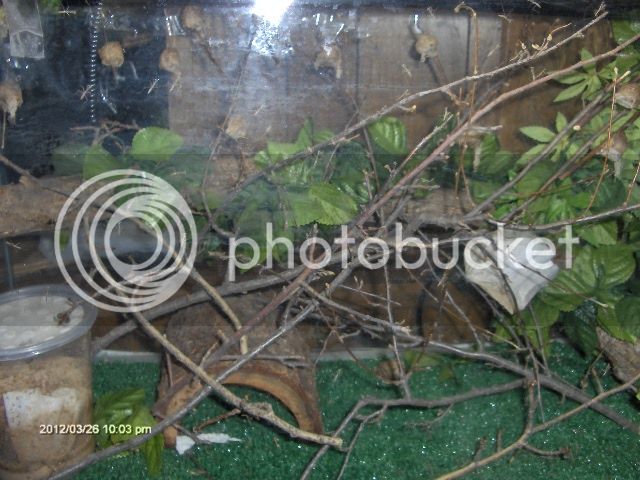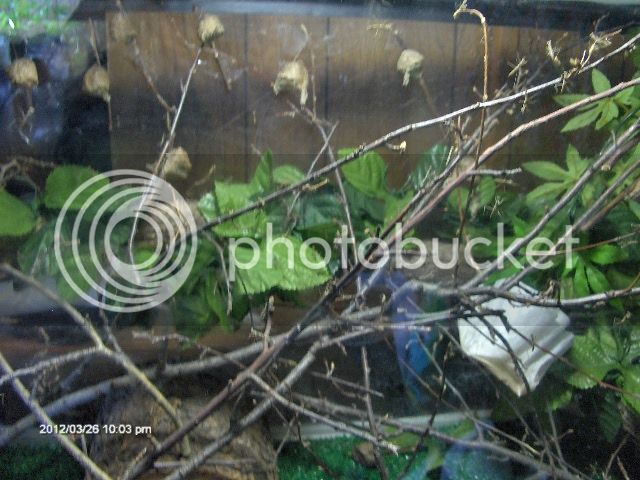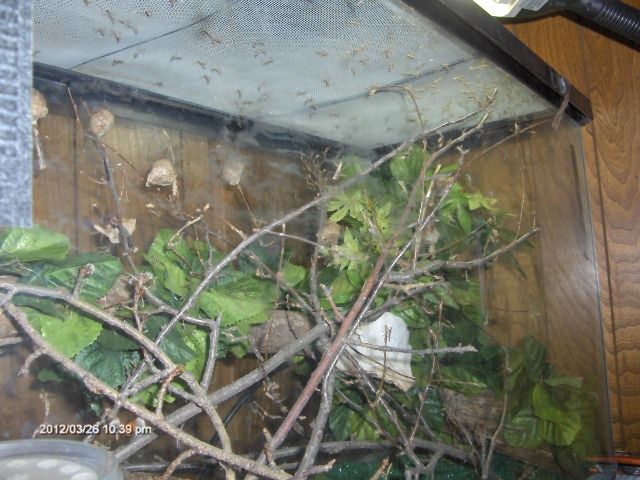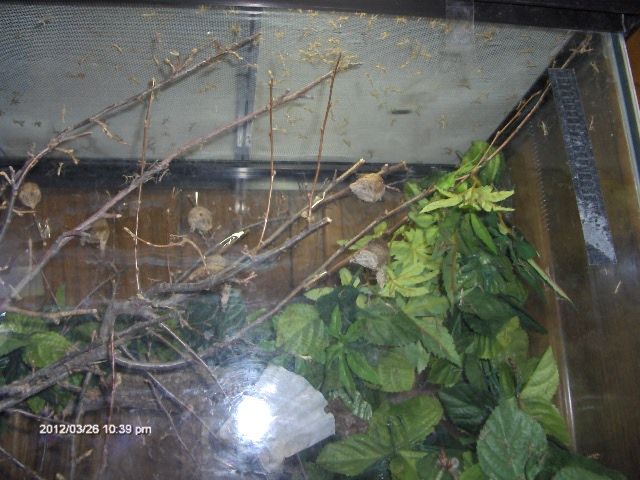Malakyoma
Well-known member
Hey guys. Just providing an update on my T. sinensis that hatched two nights ago.
I transfered 36 into new comfy homes, with 3 being in each cup. The remainder stayed in the 90oz container overnight. I'm guessing I was really off guessing 60+ nymphs because there were still plenty in the container when I finished transferring the 36.
Now for the infamous die off. There are about 10-15 dead nymphs, ALL of which are in the container. NOT the cups I transfered the nymphs into. Each and every nymph in the cups is fine. This leads me to believe that the infamous die off of T. sinensis is caused by how we keep them in such huge groups. Too many nymphs in one small area likely stresses them out to the point of death.
I know a lot of you breeders dont really care. 200 nymphs from one hatch is too many nymphs for almost anyone to take care of and I understand letting some die off to weed out the weak while lowering it down to a manageable number. At the same time, however, the L1 die off appears to be preventable. It appears to have a reason for happening, which is a step forward in understanding how it works and to prevent it. So for you breeders that actually care about your animals, separate your nymphs into smaller groups right away. This morning has shown me that will help the survival rate considerably.
NOTE: I am NOT saying none of the nymphs in the cup will die. It is very possible that there are inherently weaker nymphs that wont make it to L2 for seemingly no reason. HOWEVER I dont believe losing 80% of a T. sinensis hatch, as seems to be the norm, is caused by weak nymphs. It seems to be caused by overcrowding and stress levels.
I transfered 36 into new comfy homes, with 3 being in each cup. The remainder stayed in the 90oz container overnight. I'm guessing I was really off guessing 60+ nymphs because there were still plenty in the container when I finished transferring the 36.
Now for the infamous die off. There are about 10-15 dead nymphs, ALL of which are in the container. NOT the cups I transfered the nymphs into. Each and every nymph in the cups is fine. This leads me to believe that the infamous die off of T. sinensis is caused by how we keep them in such huge groups. Too many nymphs in one small area likely stresses them out to the point of death.
I know a lot of you breeders dont really care. 200 nymphs from one hatch is too many nymphs for almost anyone to take care of and I understand letting some die off to weed out the weak while lowering it down to a manageable number. At the same time, however, the L1 die off appears to be preventable. It appears to have a reason for happening, which is a step forward in understanding how it works and to prevent it. So for you breeders that actually care about your animals, separate your nymphs into smaller groups right away. This morning has shown me that will help the survival rate considerably.
NOTE: I am NOT saying none of the nymphs in the cup will die. It is very possible that there are inherently weaker nymphs that wont make it to L2 for seemingly no reason. HOWEVER I dont believe losing 80% of a T. sinensis hatch, as seems to be the norm, is caused by weak nymphs. It seems to be caused by overcrowding and stress levels.







